
The Field Family's Genetic Journey
|
|
Haplogroup J2 (M172) The full identification is J2b2
If one looks at the map highlighting our ancestors' route, we will see that members of haplogroup J2 (M172) carry the following Y-chromosome markers: M168 > P143 > M89 > L15 > P123 > M304 > M172 (Less is known about some markers than others. What is known about your journey is reflected below.) Today, descendants of this line appear in the highest frequencies in the Middle East, North Africa, and Ethiopia, and at a much lower frequency in Europe, where it is observed exclusively in the Mediterranean area. Approximately 20 percent of the males in southern Italy carry the marker, along with ten percent of men in southern Spain. [Exclusive is not quite the right word. There ae some J2b2 people in western Europe and a few in England.] What's a haplogroup, and why do geneticists concentrate on the Y-chromosome in their search for markers? For that matter, what's a marker? Each of us carries DNA that is a combination of genes passed from both our mother and father, giving us traits that range from eye color and height to athleticism and disease susceptibility. One exception is the Y-chromosome, which is passed directly from father to son, unchanged, from generation to generation. Unchanged, that is unless a mutation-a random, naturally occurring, usually harmless change-occurs. The mutation, known as a marker, acts as a beacon; it can be mapped through generations because it will be passed down from the man in whom it occurred to his sons, their sons, and every male in his family for thousands of years. In some instances there may be more than one mutational event that defines a particular branch on the tree. What this means is that any of these markers can be used to determine your particular haplogroup, since every individual who has one of these markers also has the others. When geneticists identify such a marker, they try to figure out when it first occurred, and in which geographic region of the world. Each marker is essentially the beginning of a new lineage on the family tree of the human race. Tracking the lineages provides a picture of how small tribes of modern humans in Africa tens of thousands of years ago diversified and spread to populate the world. A haplogroup is defined by a series of markers that are shared by other men who carry the same random mutations. The markers trace the path your ancestors took as they moved out of Africa. It's difficult to know how many men worldwide belong to any particular haplogroup, or even how many haplogroups there are, because scientists simply don't have enough data yet. The Ancestral Journey of the Ancestors of the Branch of the Field Family that are in the J2b2 Haplogroup. What is known now about M168: Our Earliest Ancestor
The man who gave rise to the first genetic marker in our lineage probably lived in northeast Africa in the region of the Rift Valley, perhaps in present-day Ethiopia, Kenya, or Tanzania, some 31,000 to 79,000 years ago. Scientists put the most likely date for when he lived at around 50,000 years ago. His descendants became the only lineage to survive outside of Africa, making him the common ancestor of every non-African man living today.
But why would man have first ventured out of the familiar African hunting grounds and into unexplored lands? It is likely that a fluctuation in climate may have provided the impetus for our ancestors' exodus out of Africa. The African ice age was characterized by drought rather than by cold. It was around 50,000 years ago that the ice sheets of northern Europe began to melt, introducing a period of warmer temperatures and moister climate in Africa. Parts of the inhospitable Sahara briefly became habitable. As the drought-ridden desert changed to a savanna, the animals hunted by our ancestors expanded their range and began moving through the newly emerging green corridor of grasslands. Our nomadic ancestors followed the good weather and the animals they hunted, although the exact route they followed remains to be determined. In addition to a favorable change in climate, around this same time there was a great leap forward in modern humans' intellectual capacity. Many scientists believe that the emergence of language gave us a huge advantage over other early human species. Improved tools and weapons, the ability to plan ahead and cooperate with one another, and an increased capacity to exploit resources in ways we hadn't been able to earlier, all allowed modern humans to rapidly migrate to new territories, exploit new resources, and replace other hominids.
Fast Facts:
The next male ancestor in our ancestral lineage is the man who gave rise to M89, a marker found in 90 to 95 percent of all non-Africans. This man was born around 45,000 years ago in northern Africa or the Middle East.
The first people to leave Africa likely followed a coastal route that eventually ended in Australia. Our ancestors followed the expanding grasslands and plentiful game to the Middle East and beyond, and were part of the second great wave of migration out of Africa.
Beginning about 40,000 years ago, the climate shifted once again and became colder and more arid. Drought hit Africa and the grasslands reverted to desert, and for the next 20,000 years, the Saharan Gateway was effectively closed. With the desert impassable, our ancestors had two options: remain in the Middle East, or move on. Retreat back to the home continent was not an option. While many of the descendants of M89 remained in the Middle East, others continued to follow the great herds of buffalo, antelope, woolly mammoths, and other game through what is now modern-day Iran to the vast steppes of Central Asia. These semi-arid grass-covered plains formed an ancient "superhighway" stretching from eastern France to Korea. Our ancestors, having migrated north out of Africa into the Middle East, then traveled both east and west along this Central Asian superhighway. A smaller group continued moving north from the Middle East to Anatolia and the Balkans, trading familiar grasslands for forests and high country.
M304: The Spread of Agriculture
The patriarch of M304 was a descendant of the M89 Middle Eastern Clan. He was born between 15,000 to 10,000 years ago in the Fertile Crescent, a region that extends from the Mediterranean Sea to the Persian Gulf where the Euphrates and Tigris rivers form an extremely rich floodplain. Today the region includes all or part of Israel, the West Bank, Jordan, Lebanon, Syria, and Iraq. The descendants of this man played a crucial role in modern human development. They pioneered the first Neolithic Revolution, the point at which humans changed from nomadic hunter-gatherers to settled agriculturists. The end of the last ice age around 10,000 years ago, and the subsequent shift in climate to one more conducive to plant production, probably helped spur the discovery of how to grow food. Control over their food supply marks a major turning point for the human species: the beginning of civilization. Occupying a single territory required more complex social organization, moving from the kinship ties of a small tribe to the more elaborate relations of a larger community. It spurred trade, writing, and calendars, and pioneered the rise of modern sedentary communities and cities. The M304 marker appears at its highest frequencies in the Middle East, North Africa, and Ethiopia. In Europe, it is seen only in the Mediterranean region.
Fast Facts:
Our ancestors left a physical footprint that matches their genetic journey. Artifacts from ancient towns such as Jericho, also known as Tell el-Sultan, a site close to present day Jerusalem, provide evidence of permanent human settlements to around 8500 B.C. The sites also suggest the transition from hunter-gatherer to settled life occurred relatively suddenly. The M172 marker defines a major subset of M304, which arose from the M89 lineage. It is found today in North Africa, the Middle East, and southern Europe. In southern Italy it occurs at frequencies of 20 percent, and in southern Spain, 10 percent of the population carries this marker. Both M304 and its subgroup M172 are found at a combined frequency of around 30 percent amongst Jewish individuals. The early farming successes of these lineages spawned population booms and encouraged migration throughout much of the Mediterranean world.
This ends the narrative of our family journey as provided by the National Geographic.
In his two volume publication on the Field Family in America, 1901, Frederick Clifton Pierce states the Sir Hubertus de la Feld of Colmar, Alsase, Germany arrived about the time of William the Conqeuror. Pierce gives the impression that all Fields are descended from a common ancestor. On the table of Fields who have submitted Y-chromosome DNA results the Fields DNA Project are from just three distinct haplogroup lines. The J, I and R haplogroups. Even this does not mean that all Fields that are J are related. The Js are divided into several subgroups. The R haplogroup is by far the largest group to contribute to the Field DNA Project. The R haplogroup is the most common male haplogroup in western Europe. I was informed by Oxford Ancestors that only 2% of English men belong to the J haplogroup. The J haplogroup is extremely small in all of western Europe.
Looking at the DNA results on the Field Y Project table there are two men that seem to be possibly closely related to our recent branch of the Field family. These are Edward Stanley Field and Charles Henry Field. (the numbers for Charles are not listed on the chart but are available to me through Ancestry.com.) He differs from me at 3 locations. This means we have a possible common ancestor from between 200 and 400 years ago. Both of these men have ancestors that moved from England to Rhode Island in the 1630's. This is close to the time that a Henry Field also migrated from England but to Virginia where our line begins. From this small amount of evidence the Rhode Island and Virginia Fields could very well be related. Being in the J haplogroup and being that the J haplogroup of Field branch seems to be rather small could indicate a relationship.
Three other men have contacted me with identical DNA and these men know they are from Culpeper, County, Virginia. One man had the surname Field and one knew the name was in his family and one knew he was adopted but had originally come form Culpeper County.
We are still looking for more men with the name Field to have their Y-chromosome DNA tested and provide us with their data. The more we learn the closer we might get to determining just who our first American immigrant was. DNA can be tested by man labs but I have used National Georaphic, Oxford Ancestors and Family Tree DNA.
|

| [home] |
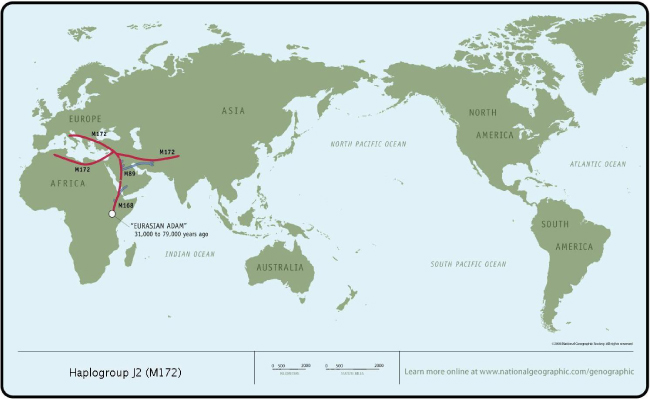
 My Y-chromosome results identify me as a member of haplogroup J2 (M172). The genetic markers that define my ancestral history reach back roughly 60,000 years to the first common marker of all non-African men, M168, and follow my lineage to present day, ending with M172, the defining marker of haplogroup J2 (M172). [This also makes anyone related to me belong to this same haplogroup. Any male that descends in a staight line from any of my Field ancestors also belongs to the J2b2 haplogroup.]
My Y-chromosome results identify me as a member of haplogroup J2 (M172). The genetic markers that define my ancestral history reach back roughly 60,000 years to the first common marker of all non-African men, M168, and follow my lineage to present day, ending with M172, the defining marker of haplogroup J2 (M172). [This also makes anyone related to me belong to this same haplogroup. Any male that descends in a staight line from any of my Field ancestors also belongs to the J2b2 haplogroup.]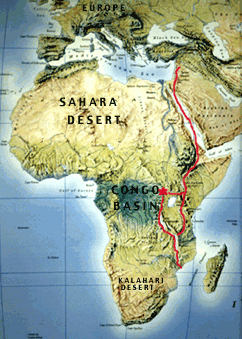 Fast Facts:
Fast Facts:
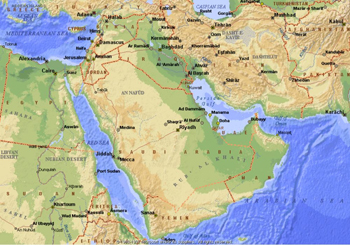 M89: Moving Through the Middle East
M89: Moving Through the Middle East
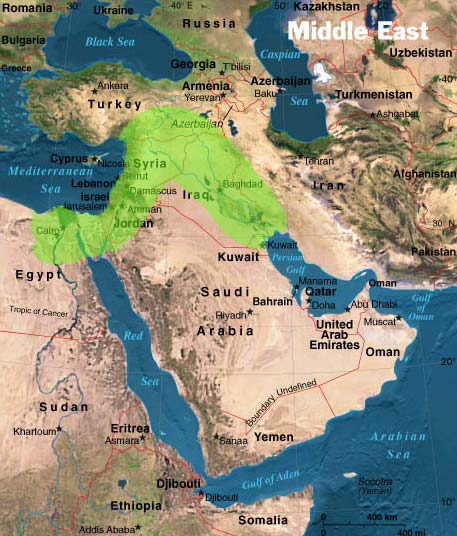 Fast Facts:
Fast Facts:
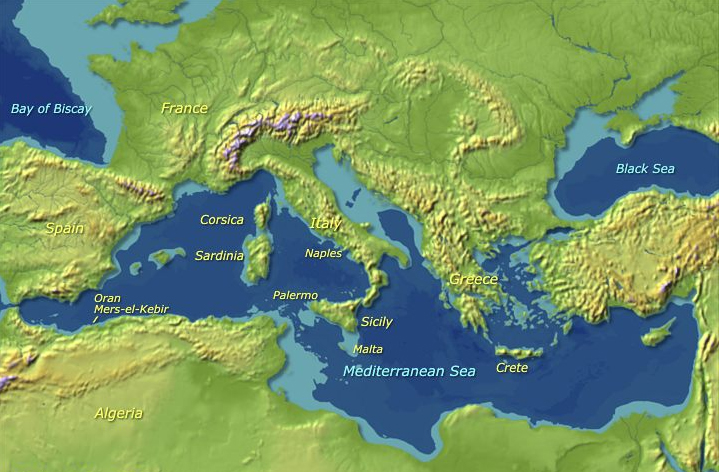 M172: Toward the Mediterranean
M172: Toward the Mediterranean
 How our more recent ancestors ended up in England is still a mystery. It could have been a random migration of a single man. During the Roman occupation of Europe many people immigrated there from many areas of the world. Soldiers were sent there to serve military obligations. One of these might have been a man from the Mediterranean area. His descendants eventually took the surname Field and he might have been our earliest J2b2 ancestor. The Moors occupied the Iberian Peninsula from the early 8th century until the mid 1400's. They lived as far north as parts of France. Some of these people could easily have moved across the English Channel and into England.
How our more recent ancestors ended up in England is still a mystery. It could have been a random migration of a single man. During the Roman occupation of Europe many people immigrated there from many areas of the world. Soldiers were sent there to serve military obligations. One of these might have been a man from the Mediterranean area. His descendants eventually took the surname Field and he might have been our earliest J2b2 ancestor. The Moors occupied the Iberian Peninsula from the early 8th century until the mid 1400's. They lived as far north as parts of France. Some of these people could easily have moved across the English Channel and into England.